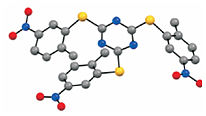
Raja Angamuthu
PhD (Leiden University)
Associate Professor, Department of Chemistry
Research Interest
Inorganic synthesis and bioinspired catalysis.
Organometallic chemistry of metalloenzymes with special focus on the enzymes related to the environmental issues such as hydrogenase, carbon monoxide dehydrogenase.
Biomimetics of methylene diurease, glyoxlase and acireductone dioxygenase.
Hydrogen production and activation of sulfur dioxide and carbon dioxide through chemical and electrochemical methods such as electrocatalysis.
Specialization
Inorganic synthesis and bioinspired catalysis.
Organometallic chemistry of metalloenzymes.
Hydrogen production and activation of sulfur dioxide and carbon dioxide through chemical and electrochemical methods.
Education
PhD (2009), Leiden University, NetherlandsThesis Title:Structural and functional models for [NiFe] hydrogenaseThesis Supervisor:Prof. Jan Reedik and Prof. Elisabeth Bouwman
M.Sc., (Bharathidasan University, Tiruchirappalli)
B.Sc.,(Bharathidasan University, Tiruchirappalli)
Teaching Area
Organometallic Chemistry
Selected Publications
Awards & Fellowships
Professional Experience
RA, Bharathidasan University, Tiruchirappalli (2002-2005)
Leiden University (2009-2010)
University of Illinois at Urbana-Champaign, Rubicon Post Doctoral Fellow (from The Netherlands Organisation for Scientific Research, NWO), (2010-2012)
Current Research
Laboratory of Inorganic Synthesis and Bio-Inspired Catalysis (LISBIC) walks along with nature to answer number of long standing questions.
Our primary goals are to understand the structure and functions of organometallic active sites in enzymes such as Carbon Monoxide Dehydrogenase (CODH), Acetyl-Coenzyme A Synthase (ACS), Acireductone Dioxygenase (ARD), Methyl-Coenzyme M Reductase (MCR), Methylenediurease (MDU) and on top of all, Hydrogenase (H2ase), in order to develop simple small molecular models as catalysts for industrially and environmentally important chemical transformations such as
(1) reversible interconversion of carbon dioxide and carbon monoxide,
(2) decomposition of the acetyl group into separate one-carbon units or catalysing acetate synthesis using one-carbon unit precursors,
(3) C-C bond cleavage,
(4) methane generation or activation,
(5) degradation of methyleneurea (slow release fertilizer), and most prominently,
(6) reversible interconversion of dihydrogen into protons and electrons.
SO2 sequestration and activation is one of our branching projects where we are developing molecules with multiple nucleophilic centers to bind with SO2.

Carbon Monoxide Dehydrogenase (CODH)
CO + H2O 2H+ + CO2 + 2e–
Methyl–Coenzyme M Reductase (MCR)
CH3–CoM + CoB–SH CH4 + CoM–S–S–CoB
Hydrogenases (H2ase)
H2 H+ + H– 2H+ + 2e–



